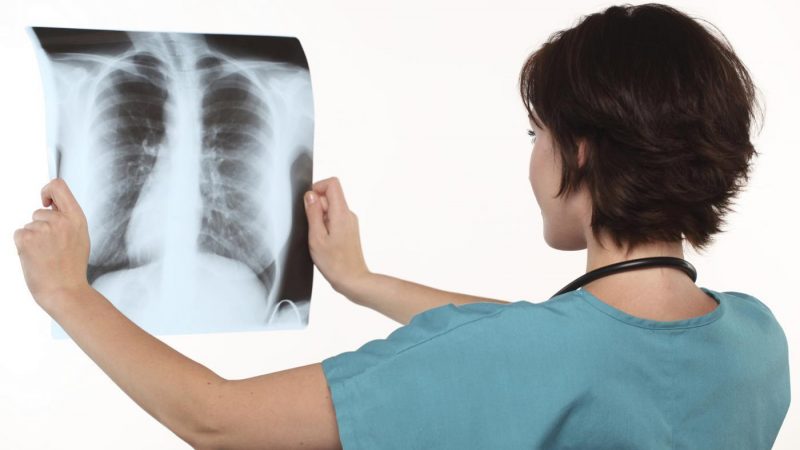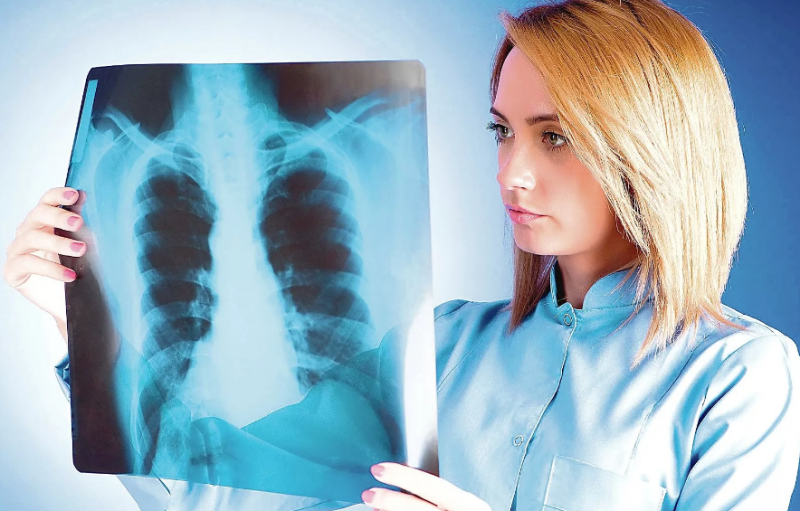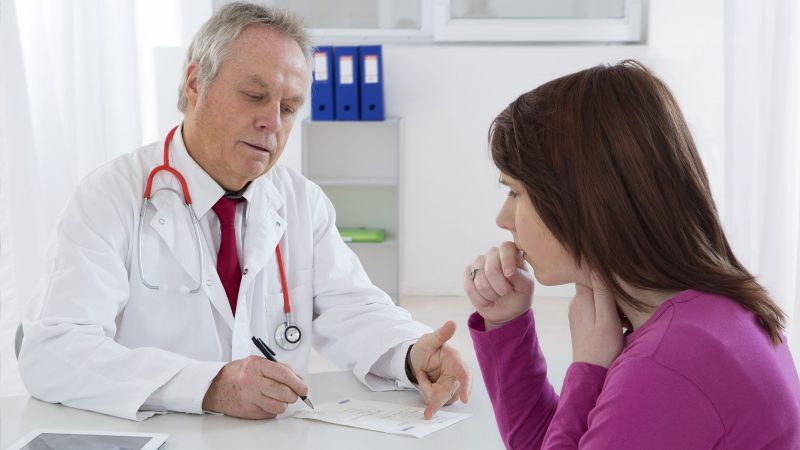Focal pneumonia is very common in 2/3 of all cases of pneumonia. When making a diagnosis, you can find its second name - bronchopneumonia. We find out what is its peculiarity and how to treat it.
Material Content:
What is focal pneumonia?
This disease is a type of acute pneumonia. Its feature is that the inflammatory process begins with the terminal bronchi, and then descends into the lungs, sometimes reaching the alveoli. With this disease, not all of the lobe can be affected, but only a part of it. That is why the disease has the name focal, since there are foci of inflammation in the lungs.
The main reason for its appearance are pathogens and viruses:
- strepto-, staphilo- or pneumococci;
- adenoviral and rhinovirus infections;
- influenza virus and parainfluenza;
- E. coli.
Often the cause is transferred infectious diseases (otitis media, meningitis, scarlet fever, measles, tonsillitis, bronchitis and others).
A significant role in the onset of the disease is played by hypothermia, bad habits, low immunity, stress or hypovitaminosis.
Classification
Depending on the nature of the course, the disease can be acute and chronic. In the first case, the symptoms are pronounced, but inflammation is easier to treat.
Depending on the nature of the lesion, there is left-sided and right-sided pneumonia.
Symptoms and signs of the disease
The disease has a less pronounced clinical picture than with the croupous form, since the inflammatory process is less aggressive. Primary manifestations are noticeable only on the second or third day after infection enters the body.
Note! The disease can occur in acute form or its onset is sluggish.
The initial symptoms of focal pneumonia can easily be confused with a common cold or SARS.
It:
- rhinitis;
- increase in body temperature;
- increased sweating;
- dry or wet cough;
- chills;
- weakness, drowsiness;
- loss of appetite;
- headache, joint pain and muscle pain.
Specific symptoms appear over time, literally in one to two days. The patient develops a strong dry cough or with sputum discharge, pain in the chest area, which intensifies during coughing. Breathing becomes difficult, there is shortness of breath. Weakness is enhanced by a high body temperature. Temperature indicators increase to 39-40 ˚С, moreover, they do not go well with antipyretic drugs.
Important! Focal pneumonia in children is developing rapidly. If no action is taken, the condition may be critical.
Inflammation can be recognized by the characteristic wheezing during breathing, blood pressure may decrease and the pulse may drop. These are alarming symptoms that indicate a serious condition.
Diagnosis of pneumonia
Inflammation of the lungs is necessarily diagnosed using instrumental techniques. Differential diagnosis with bronchitis, tuberculosis, abscess, heart attack and lung cancer is carried out.
To begin with, the doctor examines the patient, pneumonia is always accompanied by wheezing.
Further examination looks like this:
- general analysis of blood and urine;
- microbiological examination of sputum (to identify the type of pathogen);
- radiography;
- CT or MRI of the lungs;
- bronchoscopy (endoscopic examination using a bronchoscope).
According to the results of x-ray it is possible to detect focal changes.
Read also:Dry cough herbion
Treatment of pneumonia
Children with such a diagnosis must be hospitalized, adults can also be treated in a hospital.
Conservative treatment of focal pneumonia necessarily involves the following methods:
- Drug therapy. Penicillin-type antibiotics, cephalosporins or macrolides, bronchodilators and mucolytic drugs are prescribed. Medications for liquefying and eliminating sputum can be used in the form of oral agents or inhalations.
- Physiotherapeutic procedures. Apply only in the absence of temperature. Electrophoresis, UHF, electromagnetic currents are effective.
- Massage and physiotherapy exercises.
For the period of therapy, bed rest and heavy drinking are mandatory. After recovery, the patient needs to be observed by a pulmonologist for 6 months.
In case of severe lung damage or accumulation of purulent exudate, surgical intervention is indicated.
It is interesting:what happens to the body when you quit smoking
Dangerous complications
Negative consequences arise in case of untimely treatment.
Complications are quite dangerous, some of them pose a threat to the patient's life.
The most common:
- pleurisy;
- chronic pneumonia;
- pleural empyema (inflammation of the pleural sheets with the formation of purulent exudate);
- purulent pericarditis;
- pulmonary infarction;
- abscess;
- pyopneumothorax (accompanied by the entry of pus and air into the pleural cleft);
- pulmonary or nasal bleeding;
- coughing up blood;
- hematuria;
- anemia;
- respiratory or cardiovascular failure;
- myocarditis;
- toxic shock;
- sepsis;
- lung cancer.
With untimely treatment, infections affect other organs. High probability of glomerulonephritis, cystitis.
Prevention and prognosis
Recommendations for the prevention of the disease:
- give up bad habits (smoking and alcohol);
- avoid hypothermia or severe overheating;
- strengthen immunity, take vitamins;
- lead a measured lifestyle, avoid stress;
- eat well;
- treat infectious diseases of ENT organs in time;
- avoid crowded places during the period of an epidemic of colds.
The prognosis is favorable, if complications are not allowed. With timely antibacterial treatment, the temperature decreases by 3-5 days. Full recovery occurs on the 12-14th day, but according to the results of the X-ray examination, the lungs recover only by the end of 2-3 weeks.



















